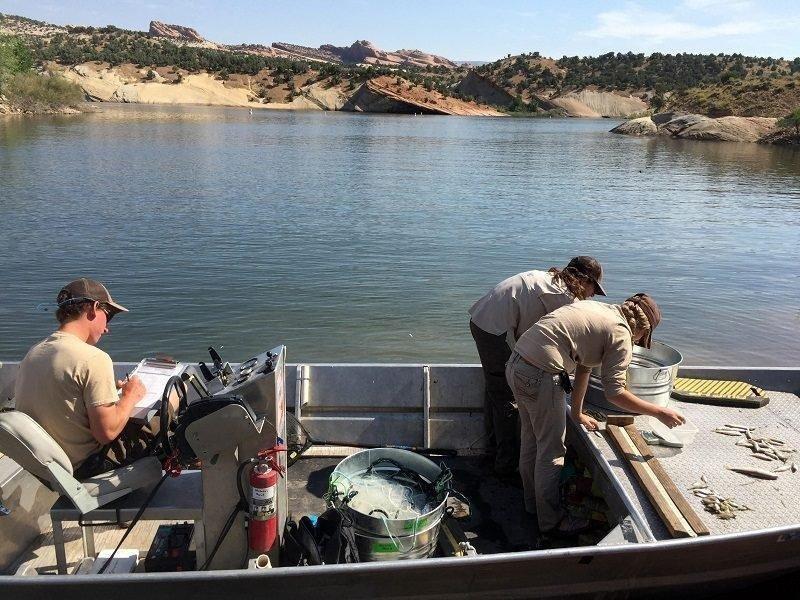DWR Press Release
Biologists conduct first survey since treating the reservoir with rotenone
Vernal – Biologists with the Division of Wildlife Resources have good news to report: after two nights of electroshocking and using gill nets to capture fish in Red Fleet Reservoir, fish stocked in the reservoir over the past several months are doing well.
“Biologists are thoroughly pleased with the results they found,” says Tonya Kieffer, regional conservation outreach manager for the DWR.
Red Fleet is about 10 miles north of Vernal. In October 2015, the reservoir was treated with rotenone to remove fertile walleye that someone placed in the reservoir illegally. “These fertile walleye posed a threat to endangered fish that live below the reservoir, in the Green River,” Kieffer says.
Kieffer says the rotenone killed all of the fish in the reservoir, giving biologists a chance to create a brand new fishery.
DWR hatchery personnel started placing fish in the reservoir last fall. Restocking work continued through the spring.
As Natalie Boren and other biologists put their boats on the water during the first week in August, they were excited—and a little nervous—about what they might find. Fortunately, any nervousness they had quickly left.
“It was very apparent that the 1,000 yellow perch we caught at Fish Lake, and transferred to Red Fleet, had produced thousands of offspring,” says Boren, regional aquatic biologist for the DWR. “We were also impressed with how the wipers are doing. When we stocked them in April, they were 10 inches long. Now, just three months later, they’ve grown to 14½ inches.”
During the two-night study, biologists also observed good numbers of black crappie, Colorado River cutthroat trout and tiger trout. Boren also reported finding sterile walleye fry in all of the survey locations across the lake. The sterile walleye fry were stocked in April. “They’re now up to 5½ long,” she says, “and they look healthy.”
Three of the seven fish that have been stocked in the reservoir—walleye, wipers (a cross between a striped bass and a white bass) and tiger trout (a cross between a brown trout and a brook trout) are sterile—they can’t reproduce.
Boren says sterile walleye are created by collecting eggs from female walleye, fertilizing the eggs with milt from male walleye, and then pressure treating the fertilized eggs. Pressure treating the eggs keeps all three chromosomes in the treated fish, resulting in walleye that are sterile and can’t reproduce. You can read more about the sterilization process at www.wildlife.utah.gov/blog/2016/stocking-sterile-fish.
Boren says sterile fish are a win-win for anglers and biologists.
“Sterile walleye, wipers and tiger trout give anglers a chance to catch a top predator while allowing us to control the size of the predator population through restocking,” she says. “We don’t have to worry about the predator population reproducing and getting too large for its forage base.”
Boren says all seven of the fish species introduced to the water, as part of the Red Fleet Management Plan, were successfully accounted for during the two-night survey. “What we observed was a wide variety and wide distribution of many of the species stocked,” she says. “It was exciting to see.”
If you have questions about fishing at Red Fleet Reservoir, call the DWR’s Northeastern Region office at 435-781-9453.


